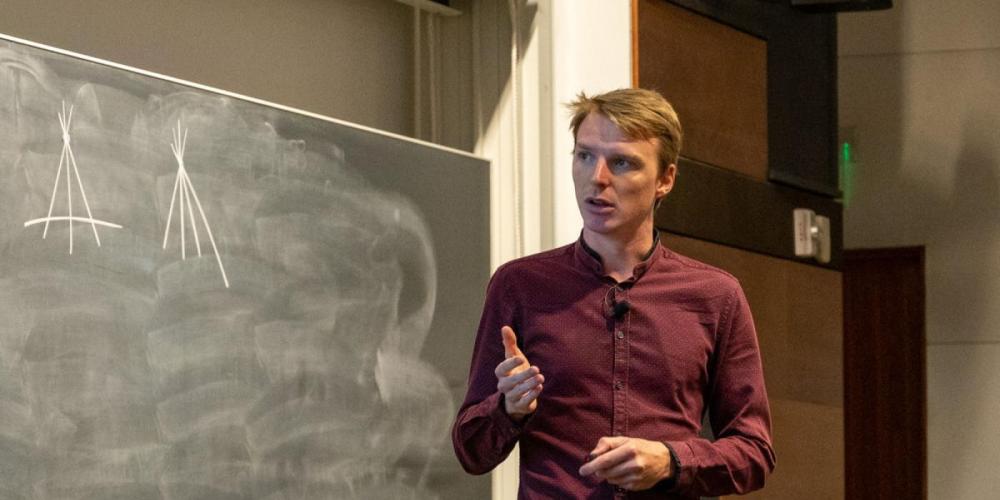
Every year, the popular science magazine EOS organises the Pipet prize. A professional jury selects five young scientists who have carried out exceptional research in the past year, before the jury and the public each choose a winner. This year, three of the five candidates are VUB graduates.
Artificial intelligence
Mathematician and political scientist Carmen Mazijn tries to unmask the “miscalculations” of artificial intelligence.
Traditionally, we have looked at the outcomes produced by artificial intelligence. Are those outcomes representative? “Now we look at how the data is processed,” Carmen explains – at the logarithm used. That way of working resulted in the development of the LUCID technique. Carmen: “LUCID breaks open the system to discover what rules AI uses. If it shows that the system discriminates, it needs to be modified.”
Carmen Mazijn (born 1992) obtained her PhD from the Vrije Universiteit Brussel on the detection of discriminative patterns in artificial intelligence. She is currently a part-time visiting professor at the VUB, and will go to Kenya next year as a Belgian diplomat.
Mathematical puzzle
Important mathematicians perform their greatest work at a young age. Is 29-year-old Sam Mattheus one of them? He solved an 85-year-old mathematical problem.
Combining his knowledge of finite geometry with classical graph theory, he not only solved the decades-old problem but also offered an innovative alternative to the current approach to Ramsey problems. Ramsey numbers are fundamental quantities representing the limits of possible disorder. They are notoriously difficult to calculate.
The world will not immediately change because of his work, but Sam believes it will one day be useful. “Mathematics has the charming property that research done today will become relevant in 50 or 100 years’ time,” he says.
Sam Mattheus (born 1993) studied in Ghent, obtained his PhD from the VUB and then moved to San Diego in the US.
Crushing dinosaurs
Natural scientist Cem Berk Senel’s research proves that the end of the dinosaurs was heralded by the fine dust released with the meteorite impact.
Fine dust released on impact would have blocked sunlight for years, causing an impact winter. That is what happened 66 million years ago, Cem wrote in the journal Nature Geoscience. He based simulations of the meteorite impact on a palaeoclimate model into which he entered new, refined geological data from field surveys.
Cem Berk Senel (born 1991) studied aerothermodynamics at Istanbul Technical University. He obtained a PhD in atmospheric and planetary sciences from the von Karman Institute for Fluid Dynamics, the Royal Observatory of Belgium and ULB. He is now an FWO postdoc at the Royal Observatory and the VUB.